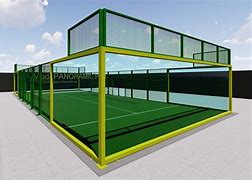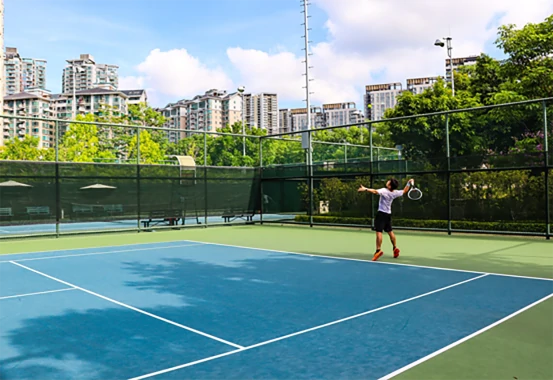Padel has emerged as a captivating fusion between tennis and squash, increasingly gaining traction across the globe. In China, this trend is flourishing, and the demand for outdoor padel courts is reaching unprecedented heights. Offering a fantastic opportunity for sports enthusiasts, these courts combine the beauty of the outdoors with the thrill of a rapidly growing sport. But what makes constructing an outdoor padel court in China a worthwhile endeavor, and how can it be optimized for both players and the environment?

Firstly, the allure of a padel court lies in its accessibility. Unlike traditional tennis, padel requires less learning time, making it an approachable sport for people of all ages and skill levels. This aspect has contributed significantly to its growing popularity in China, where community sports are becoming integral to urban life. An outdoor padel court provides a setting that enhances this communal spirit, encouraging social interaction and promoting a healthy lifestyle.
Building a padel court involves a meticulous understanding of design and materials to ensure both durability and aesthetics. The court measures 20x10 meters and is enclosed by back walls made of glass or other sturdy materials like fiber to provide visibility and safety. For courts in China, it's imperative to consider weather conditions quality materials that withstand extreme humidity, heat, and seasonal changes are essential. Using UV-protected surfaces and rust-resistant metallic components will ensure the court remains pristine and functional throughout the year.

Environmental considerations play a key role in the sustainable development of padel courts. Opting for eco-friendly construction materials, such as recycled plastic for artificial grass, not only reduces carbon footprint but also promotes ecological balance. Energy-efficient lighting solutions, like LED, can be implemented to minimize power consumption during evening play. In line with China's national policies on environmental protection, sustainable padel courts can set the standard for expanding sports infrastructures across the country.
The choice of location for a padel court should be strategic, optimizing both accessibility and visibility. Urban centers and suburbs are ideal, benefiting from existing transport networks and large potential user bases. Partnering with local businesses and park authorities can facilitate the integration of padel courts into community landscapes, further enhancing community engagement and property value.
china padel outdoor court
Expertise in padel court construction is a critical factor. Engaging with companies possessing international experience and a proven track record in building outdoor sports facilities can ensure the project meets global standards while adhering to local regulations. These organizations can provide invaluable insights into the latest design trends, court surfaces, and maintenance best practices. Investing in professional guidance ensures a seamless development process, ultimately leading to a court that offers an exceptional playing experience.
To cultivate trust and confidence among potential users, consider organizing workshops and trial sessions to introduce newcomers to padel. Providing expert training sessions and hiring experienced coaches can elevate the profile of the sport and your facility. A focus on customer feedback and continual improvement should remain at the forefront of operational strategies, establishing your court as a reliable and engaging sports venue.
Promoting an outdoor padel court in China extends beyond initial construction. A comprehensive marketing strategy, emphasizing digital channels such as Google, is pivotal. In the digital age, where search engines are the ultimate source of information, optimizing content through SEO practices ensures the facility reaches a wider audience. Tailored keywords, engaging blog articles about the sport's benefits, and showcasing testimonials can significantly enhance your court's online presence. Incorporating China's booming social media platforms like WeChat and Weibo to engage with the local community will further solidify your brand's presence and reputation.
Conclusively, establishing a padel court in China isn't merely a business venture; it's a contribution to the social and environmental landscape. It fosters community, supports a healthy lifestyle, and aligns with the country's broader ecological goals. With strategic planning, innovative construction practices, and a customer-centric approach, your padel facility is poised not just to succeed but to lead in this exciting sporting trend.



